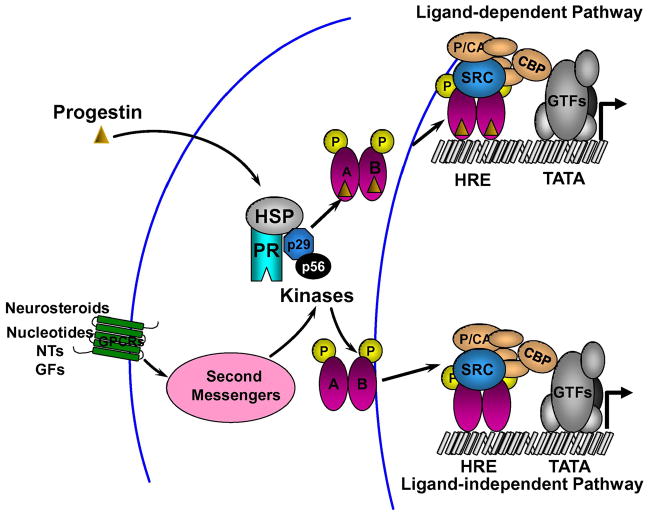Fig. 2.
Mechanisms of PR activation. Unliganded PR is present as an inactive complex associated with heat shock proteins (HSP) and chaperone proteins (p29, p56) in the cytoplasm. In the classical ligand dependent pathway of activation (LDA), progesterone and other progestins bind to the PR to induce conformational change, dissociation of HSPs and chaperone proteins. PRs undergo dimerization and bind to the hormone response element (HRE) in the target DNA. Ligand-induced conformational change facilitates the recruitment of cofactors and other general transcription factors (GTFs) to the promoter, producing a transcriptionally active complex that can direct gene transcription. Compounds such as cyclic nucleotides, neurotransmitters (NTs), growth factors (GFs) and neurosteroids can activate second messengers and protein kinase pathways to activate PR and/or coactivators in a ligand-independent manner.

